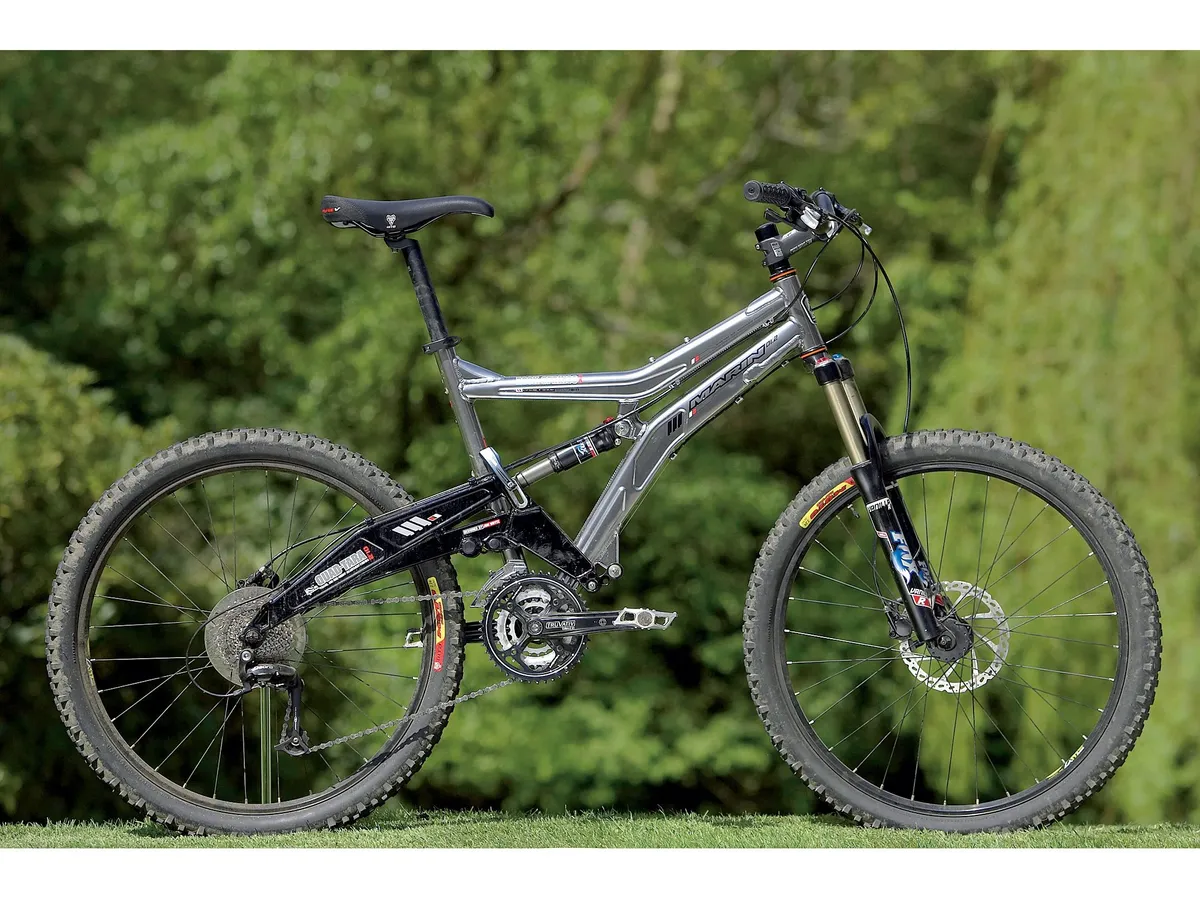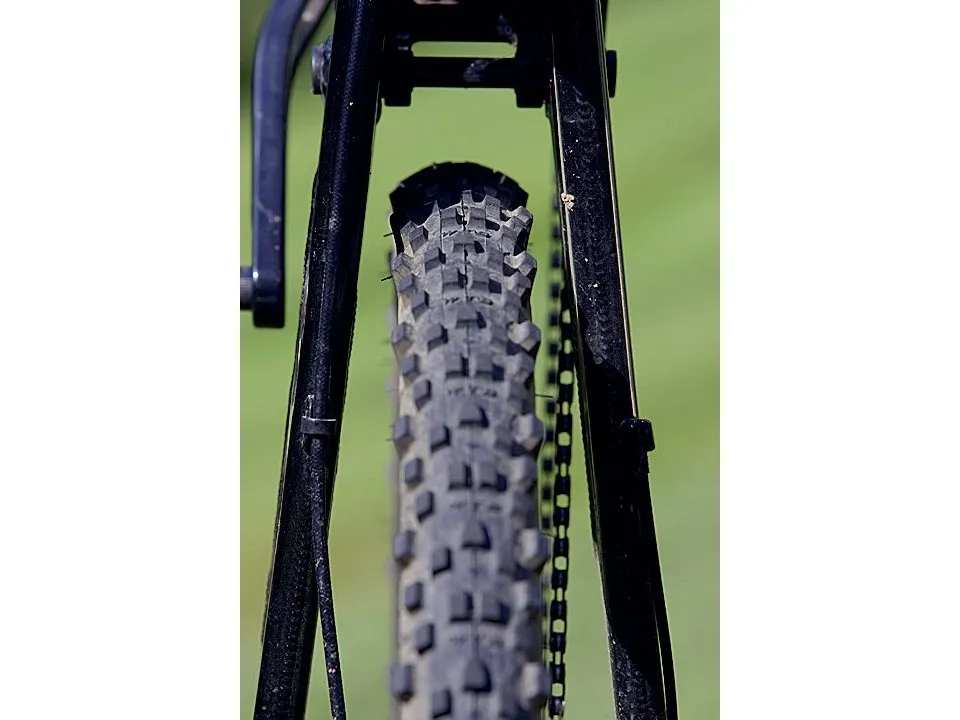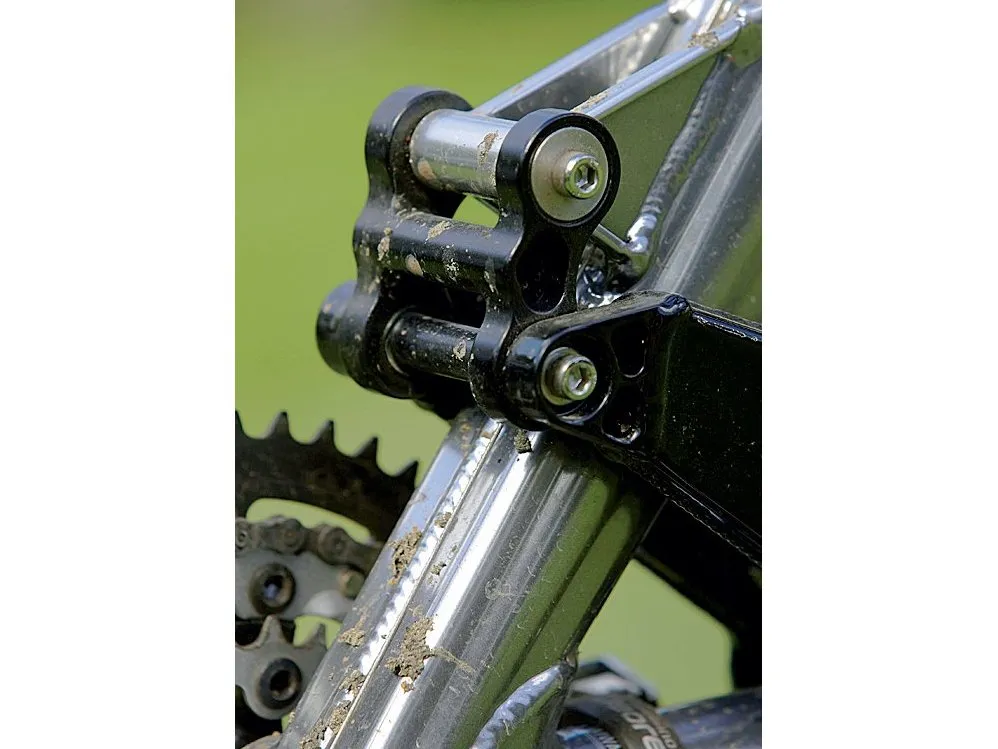Marin's Quad TARA (Travel And Ride Height Adjustment) bikes are the slightly more hardcore choices in the range. UK designer Jon Whyte is rightly proud of his Quad-Link frames and the 06 models are the best yet. The Rock Springs is the base model in the Quad TARA line but it does the job almost as well as the more expensive rigs.
The chassis
The TARA frames have been redesigned to combine a downhill-friendly ride with sharp handling and an aggressive trail riding character; it'll have you snapping at the heels of the cross-country racers. That's not easy to achieve. The suspension is as adjustable as it was previously, but the build and geometry are subtly different. The 6061 aluminium mainframe is created from semi-monocoque top and down tubes welded together from two halves.
Jon Whyte's Quad-Link suspension design is incredibly efficient and it has an excellent reputation for durability. It offers rising rate shock compression in the 100mm (4in) travel setting, linear compression at 130mm (5in) and falling rate at 150mm (6in). The slightly rearward initial rear axle path combines with this to produce buttery smooth smallbump responses, and Fox supply a specially tuned ProPedal Float R shock that emphasises the Quad- Link's efficient climbing and bump-taming characteristics.
The Fox Vanilla R 130mm (5in) travel fork doesn't have adjustable travel like the TALAS fork on the more costly Attack Trail but it's superb at bump eating and there's enough adjustment to please amateur fettlers. There's also good mud room front and rear.
But the biggest deal is the reworked geometry. The head angle (angle of the head tube to the horizontal) is a degree steeper than last year, the bottom bracket is slightly lower and more forward and the seat angle (where the saddle is in relation to the bottom bracket) has been relaxed by 1.5 degrees. This makes you feel, as Marin put it, "less perched than on a traditional XC bike" but there's more to it than that...
The detail
The drivetrain matches Shimano Deore Rapidfire shifters and gear mechs with a medium-budget Truvativ Blaze crankset featuring two steel rings. Shifting was sweet and slick throughout the test and the Hayes HFX-9 hydraulic discs were great after a short bedding-in period. The wheels are well built using Mavic X117 rims and Shimano hubs, and the WTB MotoRaptor treads are grippy all-rounders.
The high-rise Marin 27in handlebar will suit most, the FSA double-clamp stem is a quality item and there's over an inch of steerer tube spacers for height adjustments. The seatpost is long enough for the Medium (17.5in) bike to fit riders up to around 6ft.
The ride
The new TARA geometry results in a bike that looks and feels more confident, planted and lively. The new lower top tube offers more gonads room and the ride position is spot on.
The incredibly plush small-bump responses of the Quad-Link set-up make a mockery of miniature rock gardens and, even when the rocks become Alpine in stature, the longest travel option never feels phased. Actually, we ended up staying in the longest 150mm set-up most of the time, simply because the only downside it exhibits is a more wallowy feel during initial acceleration. If you want to alter the travel settings, a new quick-release lever simplifies things... Changing travel settings is a five-second job at the trailside but the lever slot did get a little sticky after a few muddy sessions. The still plush but noticeably tauter shorter travel options are very welcome if you're on a headdown XC session; you gain time by reducing the weight-shift wallow of the long setting. But this time might be lost as soon as you come across any rock and root-infested sections. That's where the long travel advantages really show. The Marin still feels like an XC bike but it can almost live with the big hitters downhill.
The handling of the previous TARA bikes was never a problem, but the geometry tweaks have noticeably improved things. The new Rock Springs is more nimble for XC but more chuckable on drops. It's more manoeuvrable on low-speed technical terrain and it responds better to weight shifts. The weight is tough on the ups, but it's as balanced and efficient as any 32-pounder out there and it shows its mettle on tough rocky, rooty climbs, where single-pivot bikes often fight for traction. And at this price it's excellent value.





